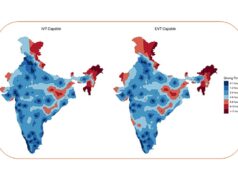
Detecting large vessel occlusion (LVO) in stroke is essential in providing the correct and most effective treatment. David Ermak (Penn State University, Hershey, USA) looks at how pre-hospital assessment scores could improve patient outcomes.
The advent of thrombolytic agents and landmark studies such as the 1995 NINDS Tissue Plasminogen Activator trial changed the face of acute ischaemic stroke (AIS) treatment.1 For years, however, progression of our understanding on to best alter the course in AIS remained relatively stagnant with few breakthroughs. That all changed in 2015 when five major studies were published in the New England Journal of Medicine, all of which proved the efficacy of endovascular thrombectomy for the treatment of LVO within 6–8 hours of the onset of AIS.2–6 Since then, more recent studies of DEFUSE 3 and DAWN have expanded that time window even further upwards of 16–24 hours.7, 8
Now, more than ever before, the recognition of stroke symptoms, and more specifically the recognition of LVO, has become crucial to the treatment of patients suffering from AIS. Endovascular thrombectomy for LVO has given us a powerful tool in our arsenal in the battle against AIS, but that tool is useless if we fail to recognise the appropriate patients for this therapy. As such, numerous tools have been designed for use in the prehospital setting for recognition of not only stroke symptoms, but more precisely the recognition of stroke symptoms that indicate the presence of LVO.
Specific tools
The National Institute of Health Stroke Scale (NIHSS) is well-recognised as the standard for assessing stroke severity.9 However, it is a complicated scoring tool that is not designed for use in the pre-hospital environment by Emergency Medical Services (EMS) personnel. Current guidelines recommend that EMS utilise validated instruments such as the FAST scale, Los Angeles Prehospital Stroke Screen, or Cincinnati Prehospital Stroke Scale.9
Use of these tools is imperative in identifying the presence of stroke symptoms and heavily influences the EMS decision about hospital selection to favour those locations which can deliver intravenous tissue plasminogen activator (IV tPA).
Current national guidelines have not yet embraced a requirement for use of a prehospital LVO scale; however, many state legislations have identified this need in order to filter appropriate patients to comprehensive stroke centres (CSC) or thrombectomy capable stroke centres.
There are many such tools designed for LVO detection in the prehospital setting. Some are based on their stroke scale counterparts such as the Cincinnati Stroke Triage Assessment Tool (C-STAT), FAST-ED, and Los Angeles Motor Scale (LAMS).10 –12 Others are more novel, yet still heavily based on the components of the NIHSS; these include PASS, RACE, and VAN. Of course there are other scales as well that I have not mentioned.13–15
What all these tools share in common is their goal of separating patients with AIS into two groups, those with LVO and those without. This distinction can be critical for EMS when determining the optimal destination hospital for a given patient. These tools have been designed for use by EMS, but admittedly some are more complex than others, and perhaps unnecessarily so. LAMS, RACE, and FAST-ED all require the EMS provider to determine severity of a given deficit and assign a numerical value according to that particular scale. Furthermore, RACE requires a different subset component depending on the sidedness of the symptoms; right sided deficits requiring assessment for aphasia, whereas left sided deficits would require the assessment of neglect.
PASS, VAN, and C-STAT are more basic assessment tools, simply requiring the EMS provider to
determine the presence or absence of a given deficit rather than score the severity; however, one notable exception is that gaze preference on the C-STAT is worth two points and all other findings are worth one. LAMS, RACE, FAST-ED, PASS, and C-STAT all have numeric cutoffs that need to be met or exceeded in order to meet criteria for possible LVO. The exception to this rule is VAN, which is the only scale to be simply “positive” or “negative” and necessitates only the presence of weakness with one or more associated cortical signs (visual changes, aphasia, and neglect/gaze preference).
Discussion
The ideal LVO tool should be easy for EMS providers to use, result in few LVO patients missed (~10% false negative rate), and prevent unnecessary transfer and over-testing in those without LVO.16 In other words, the tool should be simple and have both high sensitivity and high specificity. Unfortunately, none of these tools have clearly proven superior to another. Some tools have promising prospective results in moderately sized populations, such as RACE (n=357), whereas other tools have extremely limited data such as VAN (n=62).
Recently, at the 2018 International Stroke Conference we presented an independent cohort of 973 patients with AIS (30% of whom had LVO) and retrospectively applied each scoring tool using the NIHSS on admission to determine the correlating score for various scales (VAN, PASS, FASTED, C-STAT, RACE). Since this was a retrospective study of AIS patients only, we were unable to identify a true specificity as we lacked stroke mimics in our cohort. Impressively, VAN performed the best and correctly identified the presence of LVO (as detected on CTA or MRA imaging) 89% of the time, leaving a false negative rate of 11%. On the contrary, RACE performed the worst and was only able to correctly identify LVO 72% of the time, resulting in a false negative rate of 28%. For the sake of comparison, an NIHSS cut-off of six or more points correctly identified LVO 94% of the time in our population.
Conclusions
Prehospital detection of LVO remains a hot topic for ongoing research and while the optimal scale remains as of yet undetermined, VAN appears to show great promise, but validation of its specificity has not yet been adequately assessed.
References
1. National Institute of Neurological Disorders and Stroke rt-PA Stroke Study Group. Tissue plasminogen activator for acute ischemic stroke. N Engl J Med. 1995;333(24):1581-7. doi: 10.1056/NEJM199512143332401. PubMed PMID: 7477192.
2. Berkhemer OA, Fransen PS, Beumer D, van den Berg LA, Lingsma HF, Yoo AJ, et al. A randomized trial of intraarterial treatment for acute ischemic stroke. NEngl J Med. 2015;372(1):11-20. Epub 2014/12/17. doi:10.1056/NEJMoa1411587. PubMed PMID: 25517348.
3. Campbell BC, Mitchell PJ, Kleinig TJ, Dewey HM, Churilov L, Yassi N, et al. Endovascular therapy for ischemic stroke with perfusion-imaging selection. NEngl J Med. 2015;372(11):1009-18. Epub 2015/02/11. doi: 10.1056/NEJMoa1414792. PubMed PMID:25671797.
4. Goyal M, Demchuk AM, Menon BK, Eesa M, Rempel JL, Thornton J, et al. Randomized assessment of rapid endovascular treatment of ischemic stroke. N Engl JMed. 2015;372(11):1019-30. Epub 2015/02/11. doi:10.1056/NEJMoa1414905. PubMed PMID: 25671798.
5. Jovin TG, Chamorro A, Cobo E, de Miquel MA, Molina CA, Rovira A, et al. Thr ombectomy within 8 hours after symptom onset in ischemic stroke. N EnglJ Med. 2015;372(24):2296-306. Epub 2015/04/17. doi:10.1056/NEJMoa1503780. PubMed PMID: 25882510.
6. Saver JL, Goyal M, Bonafe A, Diener HC, Levy EI, Pereira VM, et al. Stent-r etriever thrombectomy after intravenous t-PA vs. t-PA alone in stroke. N Engl JMed. 2015;372(24):2285-95. Epub 2015/04/17. doi:10.1056/NEJMoa1415061. PubMed PMID: 25882376.
7. Albers GW, Marks MP, Kemp S, Christensen S,Tsai JP, Ortega-Gutierrez S, et al. Thr ombectomy for Stroke at 6 to 16 Hours with Selection by Perfusion Imaging. N Engl J Med. 2018;378(8):708-18. Epub 2018/01/24. doi:10.1056/NEJMoa1713973. PubMed PMID: 29364767.
8. Nogueira RG, Jadhav AP, Haussen DC, Bonafe A, Budzik RF, Bhuva P, et al. Thrombectomy 6 to 24 Hours after Stroke with a Mismatch between Deficit and Infarct. N Engl J Med. 2018;378(1):11-21. Epub 2017/11/11. doi:10.1056/NEJMoa1706442. PubMed PMID: 29129157.
9. Powers WJ, Rabinstein AA, Ackerson T, Adeoye OM, Bambakidis NC, Becker K, et al. 2018 Guidelines for the Early Management of Patients With Acute Ischemic Stroke: A Guideline for Healthcare Professionals From the American Heart Association/American Stroke Association. Stroke. 2018;49(3):e46-e110. Epub 2018/01/24. doi: 10.1161/ STR.0000000000000158. PubMed PMID: 29367334.
10. Katz BS, McMullan JT, Sucharew H, Adeoye O, Broderick JP. Design and validation of a prehospital scale to predict stroke severity: Cincinnati Prehospital Stroke Severity Scale. Stroke. 2015;46(6):1508-12. Epub 2015/04/21. doi: 10.1161/ STROKEAHA.115.008804. PubMed PMID: 25899242; PubMed Central PMCID: PMCPMC4442042.
11. Lima FO, Silva GS, Furie KL, Frankel MR, Lev MH, Camargo É, et al. Field Assessment Str oke Triage for Emergency Destination: A Simple and Accurate Prehospital Scale to Detect Large Vessel Occlusion Strokes. Stroke. 2016;47(8):1997-2002. Epub 2016/06/30. doi: 10.1161/STROKEAHA.116.013301. PubMed PMID: 27364531; PubMed Central PMCID: PMCPMC4961538.
12. Llanes JN, Kidwell CS, Starkman S, Leary MC, Eckstein M, Saver JL. The Los Angeles Motor Scale (LAMS): a new measure to characterize stroke severity in the field. Prehosp Emerg Care. 2004;8(1):46-50. PubMed PMID: 14691787.
13. Hastrup S, Damgaard D, Johnsen SP, Andersen G. Prehospital Acute Stroke Severity Scale to Predict Large Artery Occlusion: Design and Comparison With Other Scales. Stroke. 2016;47(7):1772-6. Epub 2016/06/07. doi: 10.1161/STROKEAHA.115.012482. PubMed PMID: 27272487.
14. Pérez de la Ossa N, Carrera D, Gorchs M, Querol M, Millán M, Gomis M, et al. Design and validation of a prehospital stroke scale to predict large arterial occlusion: the rapid arterial occlusion evaluation scale. Stroke. 2014;45(1):87-91. Epub 2013/11/26. doi: 10.1161/STROKEAHA.113.003071. PubMed PMID: 24281224.
15. Teleb MS, Ver Hage A, Carter J, Jayaraman MV, McTaggart RA. Stroke vision, aphasia, neglect (VAN) assessment-a novel emergent large vessel occlusion screening tool: pilot study and comparison with current clinical severity indices. J Neurointerv Surg. 2017;9(2):122-6. Epub 2016/02/17. doi: 10.1136/ neurintsurg-2015-012131. PubMed PMID: 26891627; PubMed Central PMCID: PMCPMC5284468.
16. Michel P. Prehospital Scales for Large Vessel Occlusion: Closing in on a Moving Target. Stroke. 2017;48(2):247-9. Epub 2017/01/13. doi: 10.1161/ STROKEAHA.116.015511. PubMed PMID: 28087805.
David Ermak is assistant professor Vascular Neurology in the Department of Neurology and Officer for Quality, Medical Informatics, & Clinical Documentation at Penn State University, Hershey, USA













